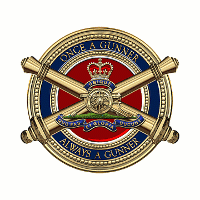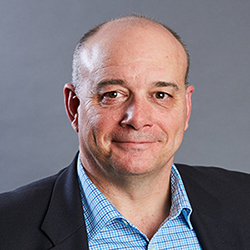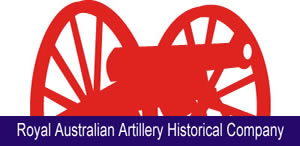Timothy Frederick Cape, the son of Charles Scarvell Cape solicitor of Sydney, and Maude Want Cape was born at Vaucluse on the 5th August 1915. He was the youngest of three children. He became a well-known figure during his long service in the Australian Army, in his subsequent role as a business consultant, and through his association with many organisations and clubs. He was a very pleasant, gregarious and agreeable character who easily made friends and readily contributed to discussion.
Tim's interest in the Army stemmed from his father, a member of the volunteer movement in New South Wales, who had served in the war in South Africa where he was awarded the Distinguished Service Order.
At Cranbrook School, Tim was an enthusiastic member of the cadet corps. His headmaster, Iven Mackay (later Lieutenant General Sir Iven, a highly respected AIF leader in World War 2) encouraged him to apply for entry to the Royal Military College. Together with ten other Australians and four New Zealand cadets, Tim marched in to Royal Military College on 1st March 1934. Of this small class, twelve graduated on 14th December 1937. Tim was commissioned in the Australian Staff Corps and allotted to Artillery.
His first gunner posting was Regimental duty with 1st Heavy Brigade at Georges Heights, Sydney, where he gained experience with 6-inch coast-defence guns and the newly installed 9.2 inch battery on North Head. With another officer he was posted to the Port Moresby Defences, specifically 13th Heavy Battery, in March 1939. They faced the task of installing two 6-inch guns on Paga Hill for the defence of the port
and manning them on a limited basis. With the formation of Headquarters 8th Military District in Port Moresby, Tim served for a short while as a staff officer before returning to Australia in March 1941. Tim was hoping to be allotted to an AIF unit for active service in the Middle East, but this was not to be.
Instead he was given the challenge of establishing the Anti-Tank Wing of the School of Artillery at Puckapunyal, Victoria. This he tackled with enthusiasm and drive in the face of extremely limited expertise, doctrine, guns, ammunition and equipment. Quite some time later, his outstanding service at the Anti-Tank Wing and his earlier activities in New Guinea were recognised when he became a Member of the Order of the British Empire.
Tim's desire for an AIF appointment was granted when he was posted as Brigade Major 23rd Infantry Brigade on 5th February 1942 and told to report to Darwin without delay. His appointment was to Headquarters Sparrow Force in Timor. He arrived on the island a few days before the Japanese landed, evaded capture, and linked with the 2nd/2nd Independent Company, which was operating in Portuguese Timor. He then endured the hardships and adventures of guerrilla warfare until he was recalled to Australia in August. Later he was Mentioned In Despatches for exceptional services in the field. By October 1942, Tim was back in Port Moresby at Headquarters New Guinea Force as a Lieutenant Colonel where he gained a notable reputation, in the face of enormous difficulties, for putting the arrangements for offensive air support and air supply in that theatre on a sound basis. Thereafter, attendance at the Staff School and a posting to Land Headquarters was followed by a further stint in the air support business for the final campaigns involving Australian forces in Borneo. In recognition of his contributions in the field of air support he was made a Companion of the Distinguished Service Order and awarded the US Bronze Star.
The cessation of hostilities saw Tim posted to the Occupation Force in Japan as the senior operations
staff officer. Two years at Army Headquarters followed, and then his talents in joint operations were put to good use when he became an instructor at the United Kingdom School of Combined Operations from November 1949 and then attended the Staff College, Camberley. Before returning to Australia at the end of 1953 he attended the United Kingdom Joint Services Staff College.
Back in Australia he was promoted to Colonel as Commandant of the Officer Cadet School, an appointment which he averred as the most rewarding of his career. Promoted to Brigadier he was, for a short while, Commandant of the Australian Staff College before assuming duty as Deputy Master General of the Ordnance in April 1957.
Tim wrapped up his already extensive military education by attending the Imperial Defence College, London 1960 course. On return, he was Chief of Staff Northern Command throughout 1961, and married Elizabeth Rabett the daughter of Colonel R. L. R. Rabett on 31st August 1961. They had been
friends since schooldays and on occasions he remarked with regret that he had not asked much earlier!
Short stints in Melbourne at Army Headquarters and as Commander Central Command preceded promotion to Major General in February 1965 as General Officer Commanding Northern Command.
Three years later he took up his final appointment as Master General of the Ordnance. He retired in August 1972 as a Companion of the Order of the Bath, awarded in 1972 and Commander of the Order of the British Empire in 1966.
In retirement he became a consultant in the provision of defence equipment. This involved frequent overseas visits and allowed him to keep in contact with relatives and many friends in the United Kingdom, Canada and United States of America. His desire to travel seemed unquenchable. His circle of friendship was wide. He was a member of many clubs, societies and associations, amongst which were the Royal United Services Institution, the National Council of the Red Cross, the Royal Australian Artillery Historical Society, and the Royal Australian Artillery Association ACT. He was particularly proud of his Gunner connections. He died on 20th December 2003, survived by his only child Lizette, her husband Stephen Amorsen and grandchildren Ingrid, Greta and Elsa. Our sympathy goes out to them. |






